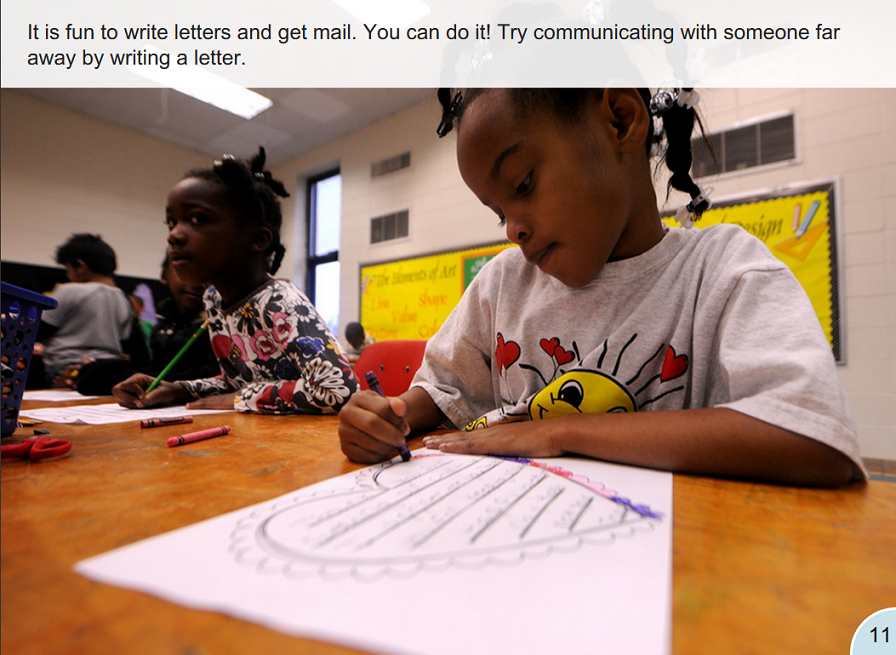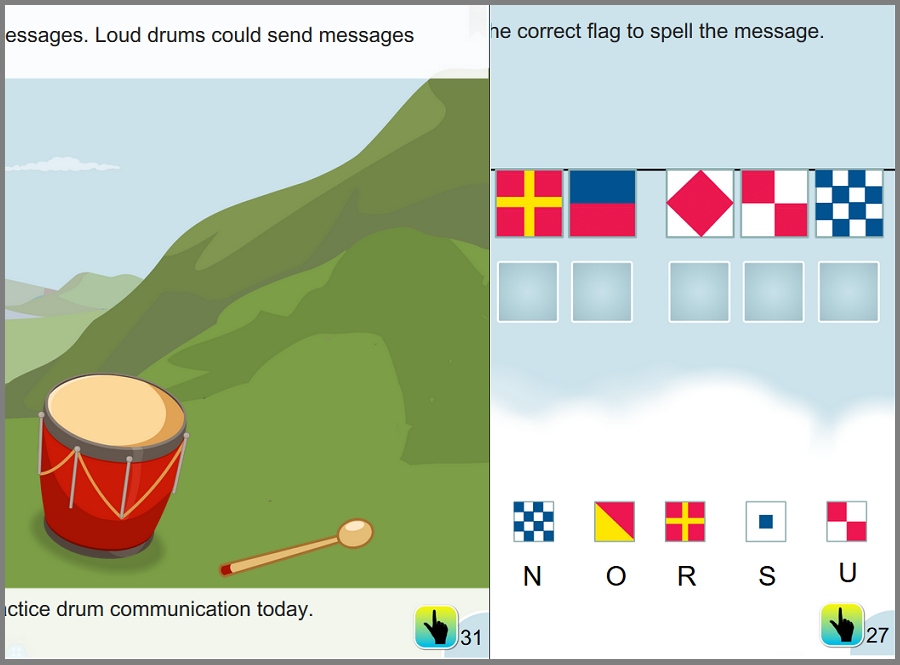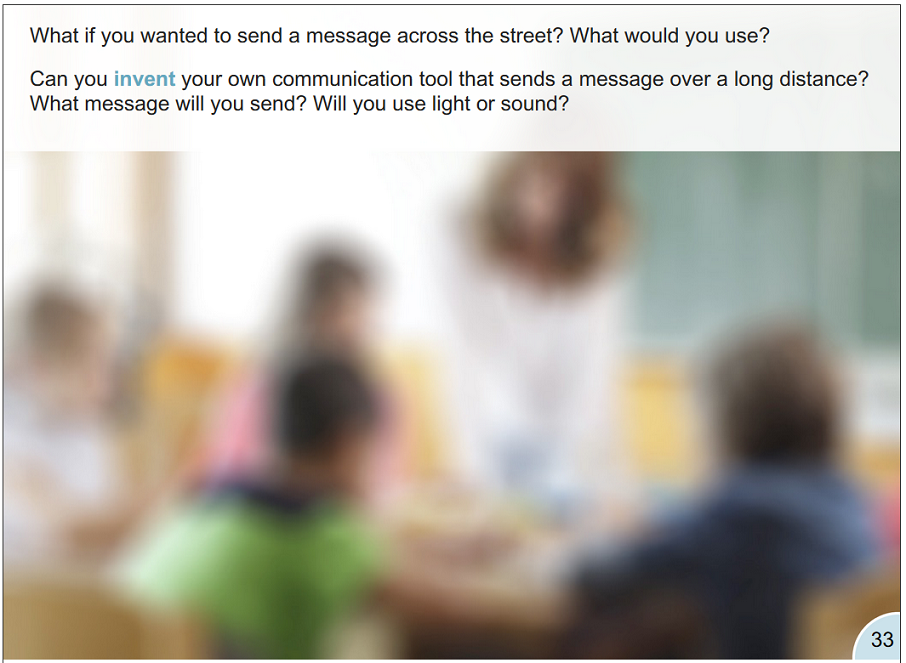Elementary Informal Education | Daily Do
How Can We Send Messages to Someone Far Away?

Crosscutting Concepts Disciplinary Core Ideas Is Lesson Plan Literacy NGSS Physical Science Science and Engineering Practices Elementary Informal Education Grade 1
Welcome to NSTA's Daily Do
Teachers and families across the country are facing a new reality of providing opportunities for students to do science through distance and home learning. The Daily Do is one of the ways NSTA is supporting teachers and families with this endeavor. Each weekday, NSTA will share a sensemaking task teachers and families can use to engage their students in authentic, relevant science learning. We encourage families to make time for family science learning (science is a social process!) and are dedicated to helping students and their families find balance between learning science and the day-to-day responsibilities they have to stay healthy and safe.
Interested in learning about other ways NSTA is supporting teachers and families? Visit the NSTA homepage.
What Is Sensemaking?
Sensemaking is actively trying to figure out how the world works (science) or how to design solutions to problems (engineering). Students do science and engineering through the science and engineering practices. Engaging in these practices necessitates that students be part of a learning community to be able to share ideas, evaluate competing ideas, give and receive critique, and reach consensus. Whether this community of learners is made up of classmates or family members, students and adults build and refine science and engineering knowledge together.
Introduction
Today more than ever, we're all looking for ways to send messages filled with love, hope, comfort, inspiration, information to keep us safe, and friendship over a distance. In today's task, How Can We Send Messages to Someone Far Away?, students and their families read the NSTA eBook Like a Scientist: Did You Get My Message?, which engages them in science and engineering practices and the use of patterns as a thinking tool (crosscutting concept) to figure out the many different ways people communicate over long distances.

Preparation
Before you invite your students to read aloud or read along with you, take a few minutes to become familiar with the eBook and suggested supporting resource(s).
STEP 1. Open the Think Like a Scientist: Did You Get My Message? eBook. You may want to pause here and read the eBook to identify pages with (a) big ideas you want to emphasize through questioning and/or discussion and (b) embedded tasks that will require students to develop new knowledge and skills to complete.
STEP 2. Gather materials your students might use to communicate with someone far away (across the room, across the street, across town, or across the country), such as
- pencil
- crayons, markers, or colored pencils
- blank paper
- construction paper
- whiteboard and marker
- flashlight(s)
- whistle(s)
- craft sticks
- tape
- assortment of pictures (playing cards with different pictures, cards from a matching game, etc.)
STEP 3. Consider creating a nonverbal message to share with your students before reading the eBook together. It can be a simple message of welcome, directions you want students to follow, or a question or two you want your students to answer (maybe in the same way you communicate the questions to them).
Ask students, "How did you figure out the message?" You might tell them that they've identified some of the ways people communicate information without speaking.
You may ask students to share other ways they've experienced communicating information. You may choose to make a list that students can refer to as you read the eBook together. Which methods of communicating are included in the eBook? Which methods are not? What do students think the difference is between the methods of communicating shared in the eBook and the methods that were not included?
Now you're ready to begin today's task!
Note: Did You Get My Message's numerous interactive features allow students and families to explore the many different ways we communicate information. Below are additional opportunities the eBook provides for students and their families to engage in the science and engineering practices to make sense of science ideas.
Engaging Students With the eBook

Page 11. Have your students ever written and sent a letter? Consider asking your students to write a letter to a family member, classmate, or someone in their community who might appreciate a friendly hello or messages to decode.
If students are interested in sending a message to decode, turn to pages 16 and 17 to show students the picture messages, then to page 28 to show the message written in code. (You might choose to teach your students other codes as well.)
Consider asking students to include a self-addressed, stamped envelope in the letter to help ensure the recipient writes back to them.

Pages 27 and 33. After students have an opportunity to play the drums on page 33, ask them:
- How are the flag code and drum beat code similar? (They both are used to communicate over a distance; the receivers of the message have to know how to decipher the code.)
- What are some differences between the flag code and drum beat code? (Have to see the flags to decipher code, but have to hear the drum beats; flags stand for letters and drums might stand for whole words or might just be used for warning people.)
Note: Using the mallet tool to beat the drums on page 33 is a little tricky. If you have trouble, (1) click on the middle of the drum stick; (2) drag and center the stick over the head of one of the drums; and (3) let go. The drum stick should strike the drum and produce a sound.
Next, ask students, "Imagine you have both flags and drums to send a message to someone far away. When might sending messages with flags work better than using drums? When might drums work better than flags?"
Give students time to work independently to answer the questions. You might have them write their ideas in a science notebook or on blank paper.
Move students into small groups to share their ideas. Then ask the class to help you complete a chart that lists the pros and cons of each code. For example, flags spell out words so you get the exact message (pro), flags can be used to send a message when the receiver is in a noisy place (pro), flags can only be seen during the day (con), and you need a key to "read" the flags (con).
Help students see that both flags and drums can solve the problem of communicating over a distance, but there are situations when flags are a better solution than drums, and other situations when drums are a better solution than flags.

Page 33. Ask students, "How can we use our knowledge of the ways people communicate across distances and the engineering design process to design a device that uses light or sound to communicate information to the people in our neighborhood/community?"
Show students all of the materials available (see list in Preparation section) for their communication device/tool. Keep the materials in a central location (not on desks or directly in front of students) so that students have access but can't use them to start building yet. Alternatively, allow students to ask you to make materials available to them such as cans with plastic lids, metal pots, and spoons,
Tell students you will give them four (can be more) minutes in the Alone Zone to brainstorm ideas. Encourage students to brainstorm at least two different designs to help them (1) remain flexible in their thinking and open to collaborating on a group design that may incorporate all, some, or none of their design features, and (2) understand there are always more than one possible solution to a problem.
As students brainstorm ideas and begin to draw their designs, ask, "Why have you chosen light/sound?" Direct students to the pros and cons list of flags and drums and appropriate pages in the eBook to support their design choices with relevant evidence from data.
Ask students to share their design with a partner or small group consisting of peers or family members. Once students have shared their designs, give them the our group's plan for a communication tool worksheet or a blank piece of paper. Ask students to use their brainstormed ideas to create a group plan for a communication device that uses light or sound. Asking students to draw their group designs on the worksheet or blank paper contributes to group buy-in with the design, even if not all students' design features have been included.
As students work toward consensus on their group's designs, ask, "Why have you chosen light/sound?" Redirect students to the pros and cons list of flags and drums and appropriate pages in the eBook to support their design choices with relevant evidence from data.
Once you have approved students' designs, allow them to construct, test, and improve them at their own pace. When time is up, bring student groups together to share their designs. Consider asking each group to share the following:
- Was your design successful? Why do you say so?
- What is one thing you really like about your design? Why do you say so?
- How would you improve your design if you had more time or materials?
If students are able to independently write, you might next have each student complete a reflection on their design.
NSTA Collection of Resources for Today's Daily Do
NSTA has created a How can we send messages to someone far away? collection of resources to support teachers and families using this task. If you're an NSTA member, you can add this collection to your library by clicking Add to My Library, located near the top of the page (at right in the blue box).
Check Out Previous Daily Dos From NSTA
The NSTA Daily Do is an open educational resource (OER) and can be used by educators and families providing students distance and home science learning. Access the entire collection of NSTA Daily Dos.

